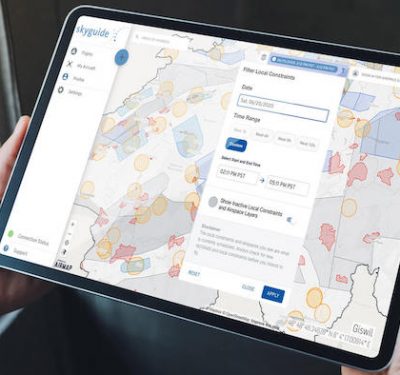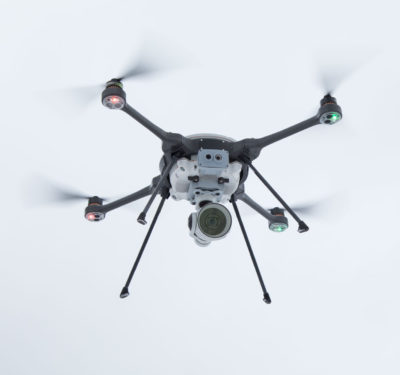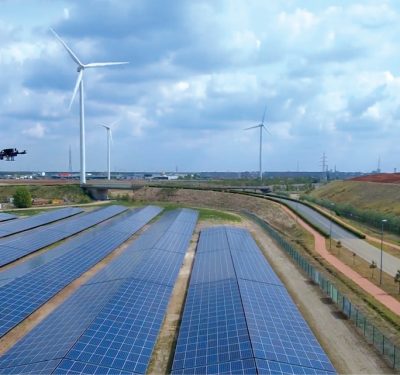
There certainly is a street, but it isn’t an autobahn and it’s really not a two-way street—yet. Until we get viable drone rules, it’s more like a British “contra-flow”—a road meant for two-way traffic, but one the authorities have set to one-way traffic. As it stands now, the Department of Defense (DOD) has clear rules for flying drones and for bringing commercial drone tech to the military. But commercial drone flight rules are so restricted that military drone tech companies are hesitant to venture into the commercial market. When the FAA does set viable drone rules, I predict that contra-flow will move initially from the military drone world to the civilian side before becoming a real two-way street a few years later.
The big aerospace companies are frustrated with the slow pace of drone rule-making compared with the rapid adoption of drone tech in the DOD. The U.S. military has been flying modern beyond visual line of sight (BVLOS) drones since the mid-90’s. Indeed, the General Atomics MQ-1/9 family of drones hit the four million flight hour mark in March of 2019, quicker than any previous U.S. Air Force aircraft. Northrup Grumman’s RQ-4 Global Hawk was the safest aircraft in the USAF Air Combat Command in 2018. As I write this article, 65 USAF MQ-9’s and 10 U.S. Army MQ-1C’s are in flight 24×7. They’re joined by hundreds of smaller, even hand-launched, U.S. military drones flown daily. These military drones vary from the Boeing 737-sized Global Hawk down to the palm-sized Black Hornet drone. Nearly every one of these drones—even the tiny Black Hornet—are flown BVLOS of remote pilots.
Contrast that with BVLOS flight by U.S. commercial drones. Nearly any new BVLOS commercial drone flight is cause for a major press release. Every major news network carried stories about delivery of a human kidney via drone, which was done once as a demonstration for an FAA integrated pilot program. The handful of companies the FAA allows to fly BVLOS generally do it over easements owned by them and, even then, they must have visual observers monitoring each flight. A way ahead for BVLOS rules is unclear: FAA draft operations over people rules aren’t viable for commercial UAS, remote ID rules are years out. Why would military drone companies want to switch from lucrative DOD contracts and step into an uncertain commercial drone market?
The short answer is that defense companies don’t want to venture into the commercial drone market. The longer answer is they’re willing to try to gain advantage against their competition, but not as a stand-alone moneymaker.
GIANT STEPS?
Let’s look at the two biggest aerospace companies—Boeing and Airbus. Boeing has a large military aircraft segment and Airbus has a smaller one, but both make substantial profits from the military manned-aircraft market. However, commercial aircraft profits dwarf military in both companies. Boeing has hired and fired a commercial drone staff twice. Boeing Corporate gave up on the commercial drone market about three years ago and gave responsibility to Insitu, a wholly-owned Boeing subsidiary. Airbus only became interested in commercial drones with the advent of NASA’s Urban Air Mobility project to find a path to unmanned drone taxi services. That captured the attention of Airbus Helicopters, and Airbus set up Airbus UTM to investigate the market. Neither has invested anywhere near the sort of cash they put down for a new airliner or helicopter model.
The only commercial drone project that might get serious, manned-airliner-level attention from the Big Two is where the FAA drone rules are the clearest—large UAS flying in controlled airspace. Here, the FAA has begun applying some manned aircraft rules like Part 91 (private manned aircraft), 135 (commercial carriers) to unmanned aircraft. The FAA also held a very successful “Large UAS Flight in Controlled Airspace” Aviation Rulemaking Committee last year that paved the way for over-55-pound drones to fly in controlled airspace if they follow the rules used by large DOD drones operating in the U.S.
Clarity in FAA rulemaking and substantial pressure from their air cargo customers now has the attention of Boeing and Airbus commercial aircraft sectors—the major moneymakers in the Big Two. Both are working with a FedEx/UPS/DHL consortium to design an optionally piloted/single pilot-configuration large cargo aircraft. Drone rules clarity combined with an existing commercial manned aircraft business in a defense company sounds like a prediction for defense interest in the commercial drone market, eh?
The opposite end of the spectrum is General Atomics, probably the most successful defense drone company on earth—but one that lacks a manned commercial aircraft segment. GA already has a tremendous inducement to get involved in the commercial drone business because its military MQ-9 drone was one of the world’s first to attain airworthiness under Part 91. However, despite having a four million-hour, airworthy drone, GA is hesitant because it doesn’t see a profit in the type of commercial mission the MQ-9 could fly. With no commercial aircraft segment to pressure corporate decision makers, I predict GA will avoid the commercial market for some time to come.
This isn’t to say there is no movement from the commercial drone market to the military. There is some, but the restrictions imposed by Part 107 make it tough for commercial vendors to enter the military market. The military doesn’t have much use for drones that can’t fly BVLOS.
THE OFF-THE-SHELF EXCEPTION
One exception is the military requirement created by the DOD ban on off-the-shelf (DJI) drones. That prohibition led to American commercial drone manufacturer Altavian winning a Short Range Reconnaissance Prototype contract from the U.S. Army to make an under-five-pound drone for platoon-level operations (For more see p. 24). The Army needed an American-made alternative to DJI drones like the Phantom IV and Altavian will hopefully use this military funding to make commercial drones to challenge DJI’s current market dominance.
NASA’s Urban Air Mobility (UAM) effort has the potential to create a two-way street between the commercial and military drone markets. Uber is heavily invested in UAM and it has attracted the attention of two DOD drone heavyweights—Bell Helicopters and the father of the modern military drone, Abe Karem (For more see p. 26). Abe hopes to capitalize on his success in designing the MQ-1 Predator as an unmanned aircraft from the ground up, rather than turning manned aircraft designs into drones. Bell is doing the opposite—capitalizing on its proven, airworthy tiltrotor technology developed in the V-22/Osprey manned tiltrotor program to create an unmanned tiltrotor “taxi” for Uber. My prediction is the winner of Uber’s UAM competition will turn right around and create a military version of its unmanned taxi.
Finally, in the “I can’t fathom why there isn’t a two-way street in this one category” is the lack of interest in the military market presented by the two big package delivery contenders—Amazon Prime Air and Google’s “X.” Why are these two fooling around trying to beg waivers from the FAA when they could be getting thousands of hours of experience—and millions in profit—delivering military cargo in war zones? I understand civilian branding might be an issue, particularly for Google, but Amazon Web Services is one of the largest IT providers to the DOD and the intelligence community. Why isn’t Amazon droning spare parts across airfields in Iraq or delivering ammo in Afghanistan?
The two-way street will flow when the FAA either figures out how to apply manned aircraft rules to drones or creates remote ID, BVLOS and ops over people rules specifically for drones. We’ll see a lot of military-to-commercial traffic initially, but things will even out soon after rational drone rules. Maybe then the big commercial drone powers—Amazon, Google and Uber—will realize there’s just as much money in ferrying supplies and soldiers in Syria as there is in delivering packages and passengers stateside.






